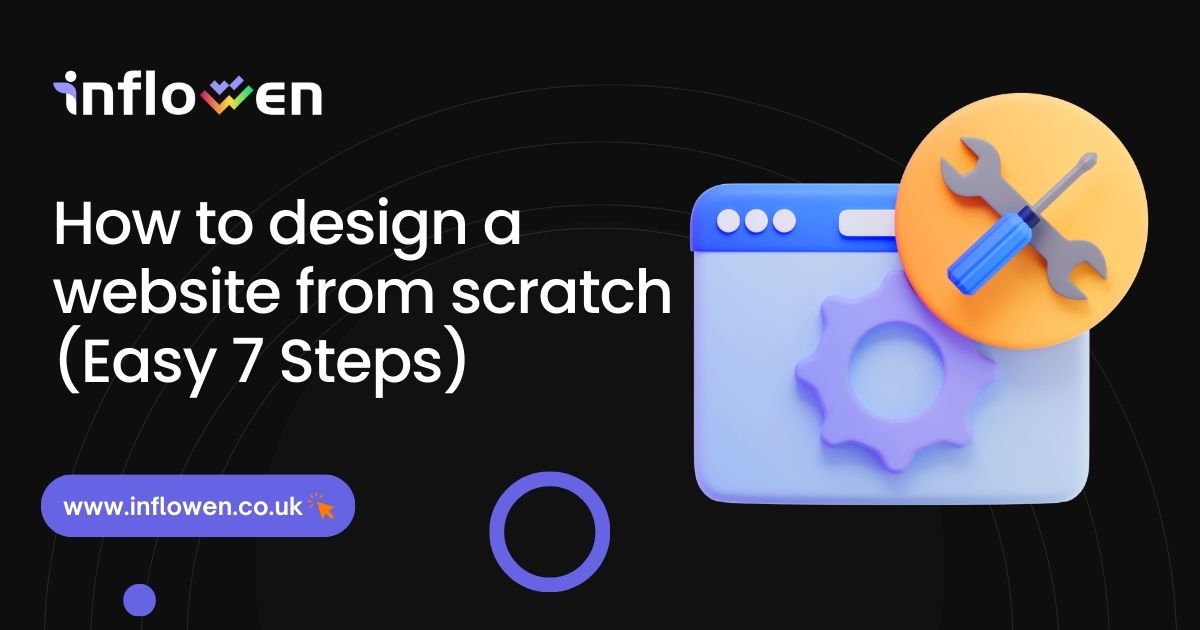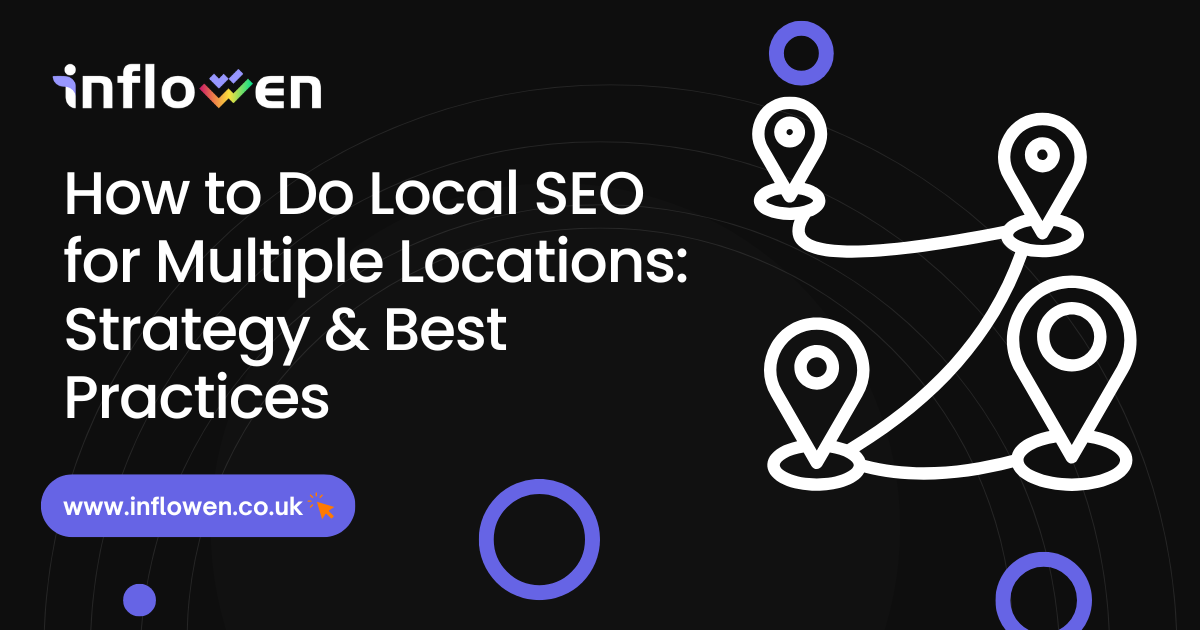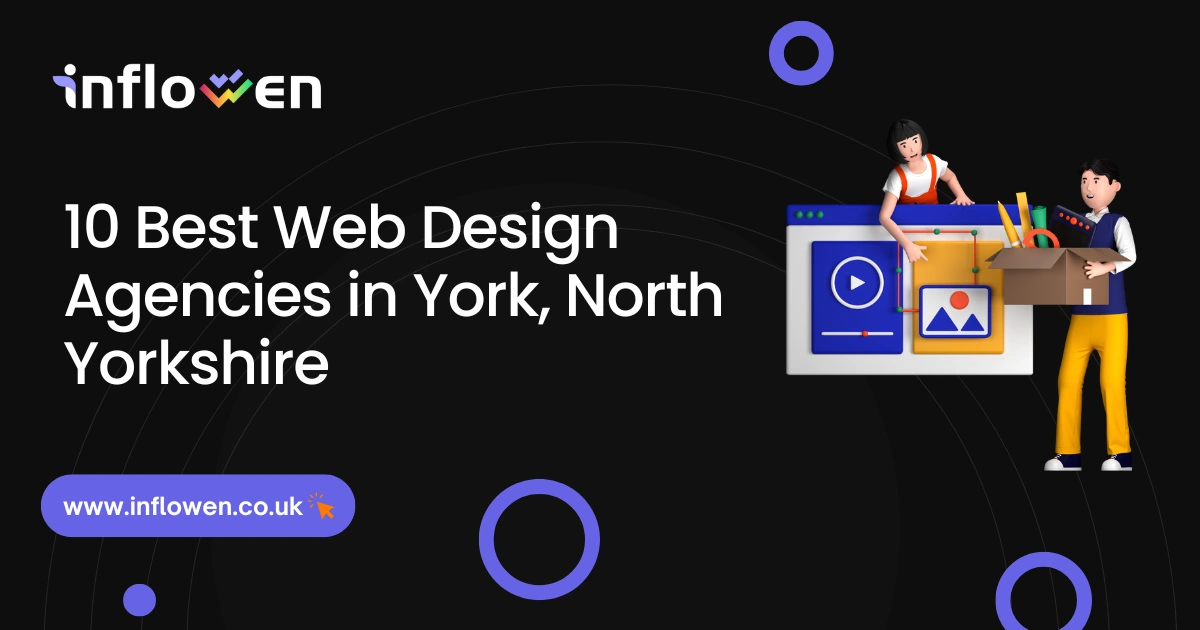Website design involves creating a structured and visually appealing online space where visitors can easily find information and interact with content. At its core, website design blends aesthetics with functionality to serve users’ needs and support business objectives.
A well-designed website serves as a critical tool for businesses, helping to establish credibility, reach new customers, and provide a memorable user experience. In today’s digital landscape, an effective website isn’t just a luxury; it’s often the first point of contact with potential customers, making it a key component of branding and marketing strategies.
Successful website design aims to balance visual appeal, usability, and performance. Whether you’re building a business site, a portfolio, or an e-commerce platform, the goals remain the same: to create a site that reflects your brand, provides easy navigation, and engages your audience effectively. Following these steps will help you design a website from scratch with clarity and purpose.
1. Define Your Purpose and Audience
Establishing a clear purpose for your website is essential to guide your design and content strategy. Different websites serve different objectives. For example, a business site might focus on generating leads, showcasing products, or building brand authority, while a personal blog emphasizes sharing insights or experiences. Similarly, a portfolio site aims to highlight professional skills and achievements. Clearly defining your website’s purpose helps streamline design choices, structure, and content that directly support your goals.
Understanding your audience’s needs is equally critical to delivering a website experience that resonates with them. Identifying the demographics, interests, and online habits of your audience allows you to tailor your messaging and design to match their preferences. This could mean creating content that addresses their questions, ensuring a user-friendly interface for easy navigation, or using visuals that appeal to their tastes. Knowing your audience well enables you to create a website that not only attracts but also retains visitors by offering relevant, engaging experiences.
2. Choose the Right Platform and Tools
Selecting a platform is one of the foundational steps in website creation. Popular options include WordPress, Wix, and Webflow, each offering unique benefits. WordPress is known for its flexibility, supporting a wide range of themes, plugins, and customisation options, making it ideal for complex websites. Wix, on the other hand, offers a drag-and-drop interface that simplifies the design process, making it beginner-friendly. Webflow combines creative freedom with visual editing and customisation, catering to those who want more control without deep technical skills. Each platform has its pros and cons, so it’s essential to evaluate them based on your website’s complexity and your technical proficiency.
Budget considerations are equally important. Platforms vary in pricing structures, with some offering free plans or affordable basic plans, while others require higher investment for premium features. Consider both upfront and long-term costs, including hosting, maintenance, and any premium themes or plugins. Choosing a platform that aligns with your budget and design requirements ensures a smooth development process and supports sustainable growth as your website evolves.
3. Plan the Structure and Layout
A logical structure is crucial for a well-functioning website, as it helps users navigate effortlessly. Commonly used page layouts include the homepage, which serves as an overview and introduction; the about page, detailing your brand story or purpose; a services or products page for offerings; and a contact page to facilitate communication. Structuring your website around these foundational pages ensures users can easily find the information they seek, enhancing their browsing experience.
Effective navigation is key to retaining visitors and guiding them to the most relevant sections of your site. Keep navigation menus simple and organized, grouping related content together. Use consistent layouts across pages and avoid overwhelming users with excessive links or options. This approach not only aids users in locating information quickly but also improves overall site usability, contributing to a positive experience that encourages deeper engagement.
4. Focus on Aesthetics and Brand Identity
The visual design of your website significantly impacts how visitors perceive your brand. Selecting an appropriate colour scheme, font choices, and images sets the tone and helps convey your brand’s identity. For instance, a professional business site might use a clean, minimalist design with neutral colours, while a creative portfolio could incorporate vibrant colours and unique typography. Every design choice should reflect your brand’s personality and be consistent across the website to reinforce recognition.
Consistency in branding is vital for building trust and familiarity with your audience. Your website should align with your broader brand identity, from logo placement to visual elements and messaging tone. Keeping design elements consistent not only enhances aesthetics but also strengthens brand identity, helping users associate specific colours, fonts, and styles with your brand, which can improve recall and loyalty.
5. Optimize for User Experience (UX)
User experience (UX) is a core component of effective website design, encompassing factors like mobile responsiveness and load speed. As mobile browsing is increasingly common, your website should adapt seamlessly across devices, providing the same high-quality experience on smartphones as on desktops. Slow load times can lead to high bounce rates, so optimizing images, reducing unnecessary scripts, and utilizing fast hosting are essential for a smooth user experience.
Creating a fluid navigation flow also plays a significant role in UX. Users should be able to find key information without unnecessary clicks or delays. Design elements like intuitive buttons, clear headings, and accessible forms all contribute to a user-friendly site. Streamlining the navigation flow ensures that users can quickly reach desired sections, enhancing engagement and encouraging return visits.
6. Implement SEO Best Practices
Implementing SEO strategies helps improve your website’s visibility in search engine results, attracting organic traffic. Begin with keyword integration in titles, headings, and body content, ensuring keywords are naturally woven into the content to maintain readability. Keywords should reflect what users are searching for and align with your website’s primary themes to improve ranking potential without compromising content quality.
Internal linking is also a valuable SEO tactic, guiding users to additional relevant content within your site and boosting session duration. Linking to related articles or sections not only enhances user engagement but also helps search engines understand the structure and relevance of your content, which can positively impact rankings.
7. Test, Launch, and Monitor Performance
Testing your website on multiple devices and browsers is crucial before launching. Tools such as Google PageSpeed Insights and Mobile-Friendly Test help identify issues with load speed, mobile responsiveness, and usability. Ensuring these aspects perform optimally across different platforms helps create a seamless experience, regardless of how users access your site.
Post-launch, monitoring analytics regularly is essential to refine the user experience based on real-time data. Reviewing metrics like bounce rate, session duration, and user behaviour reveals how visitors interact with your content, helping identify areas that may require adjustments. Regular performance checks and updates keep your website running smoothly, ensuring it continues to meet user expectations and achieve business goals.
How to Design a Website for Business?
To design a business website, follow these steps:
- Define Your Goals – Identify your website’s purpose, like generating leads or showcasing products.
- Choose a Platform – Select a platform (e.g., WordPress, Wix) based on ease of use and budget.
- Plan the Structure – Organize pages such as Home, About, Services, and Contact.
- Focus on Branding – Choose colours, fonts, and visuals that align with your brand.
- Optimize for SEO – Use keywords and internal links to improve visibility.
- Test and Launch – Check performance on different devices before launch.
Summarizing these steps ensures a business website that is user-focused and brand-aligned.
How to Design a Website Using HTML?
Designing a website with HTML involves these key steps:
- Set Up HTML Structure – Start with tags like <html>, <head>, and <body> to form the basic framework.
- Add Content Elements – Use tags such as <h1>, <p>, and <div> for headings, paragraphs, and sections.
- Style with CSS – Incorporate CSS to enhance visual elements like color, font, and layout.
- Integrate Media – Use <img> for images and <a> for links to add interactivity.
- Test Responsiveness – Ensure it displays well on mobile and desktop devices.
These steps outline the essentials of HTML-based website design, ideal for beginners or custom projects.
How to Design a Website Without Coding?
For a code-free website, follow these steps:
- Select a Website Builder – Choose platforms like Wix or Squarespace with drag-and-drop editors.
- Pick a Template – Select a design template that suits your brand and style.
- Customize Content – Add your text, images, and brand elements using the editor.
- Adjust Layout – Rearrange sections, add or remove pages, and set up navigation.
- Publish – After final adjustments, publish your site with a simple click.
These straightforward steps allow you to build a website without any coding knowledge.
How to Design a Website in WordPress?
Designing a website in WordPress involves these steps:
- Install WordPress – Choose a hosting provider and install WordPress.
- Select a Theme – Pick a theme that aligns with your site’s purpose and aesthetic.
- Customize with Plugins – Install plugins for features like SEO, contact forms, and analytics.
- Add Content – Create pages and posts, filling them with content relevant to your audience.
- Configure Settings – Adjust settings for navigation, menus, and permalinks.
- Launch – Preview your site, make final edits, and publish it live.
This process enables you to create a customized, professional-looking site using WordPress.
How Much Does It Cost to Create Your Website?
Creating a website can range from £100 to £5,000+, depending on complexity. Basic DIY sites on platforms like Wix or WordPress can cost as little as £100 for domain and hosting, while custom sites built by professionals may reach thousands. Costs vary by platform, hosting, and design complexity.
How Much Does It Cost to Set Up a Website in the UK?
Setting up a website in the UK generally costs between £150 and £5,000. Basic DIY options are budget-friendly, while custom designs and e-commerce sites can be pricier. Professional developers may charge more based on features and design needs.
How to Choose a Website Design Company?
To choose the right website design company, follow these steps:
- Review Portfolios – Look at past projects to gauge style and quality.
- Check Client Testimonials – See what past clients say about their experience.
- Discuss Services – Ensure they offer the specific services you need.
- Ask About Process – Understand their design process and timelines.
- Compare Pricing – Get quotes to find an option within your budget.
Following these steps will help you select a design company that fits your project and budget.
What Are the Best Website Design Agencies in Yorkshire, UK?
Inflowen, Bubble Design, and The Cybermill are the top-rated website design agencies in Yorkshire that specialize in small business and e-commerce web design. Agencies often provide diverse services, from branding to advanced SEO. Research each to find one that matches your budget and design requirements.
Tusar Ahmed is the Founder and Senior SEO Specialist at Inflowen. With over seven years of hands-on experience in SEO, local search optimisation, and keyword strategy, he simplifies complex digital concepts into engaging, actionable insights.
Tusar has worked on 250+ projects across the UK and beyond, helping businesses of all sizes improve their search visibility and achieve measurable growth. His writing blends technical expertise with a clear, approachable tone—making SEO feel both accessible and results-driven.
Follow his content for a fresh, practical perspective on ranking better, reaching the right audience, and staying ahead in the ever-evolving digital landscape.



